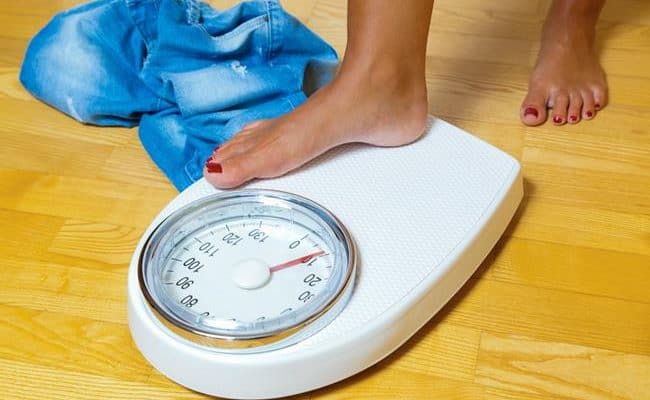
Reducing body fat can take time, so don’t expect to lose significant body fat percentage overnight. Like with any health or fitness goal, lowering your body fat percentage takes more than just a few weeks of changing your diet and exercise patterns. It takes hard work and dedication.
With that in mind, here are some factors that could help you speed up reducing body fat percentage.
Avoid cutting calories too low
If you’re trying to get leaner, you may need to modestly cut your calorie intake. However, when you drastically cut calories, your body’s metabolic rate can drastically slow down. Your ability to gain lean muscle mass is also hindered and your body can resist fat loss as a survival mechanism.
You also need adequate intake of protein, carbohydrate, fat, minerals, vitamins and water when reducing body fat percentage. If you drastically cut calories too low, you are probably not getting enough nutrients to provide your body with the nutrients to promote fat loss.
How low is too low? Everyone’s calorie needs are different. In general, it is advised not to go under 1,000-1,200 calories without physician supervision.
See also:
How to reduce body fat without losing muscle
Cut out simple carbohydrates
Cutting out simple carbohydrates can help you reduce body fat percentage faster. Simple carbohydrates like sugar, white flour, baked goods, sweetened beverages, crackers and chips break down relatively fast in the digestive system. The carbohydrates are broken down to sugars which are released into the blood stream.
The increase in blood sugar signals the pancreas to release insulin. Insulin takes glucose from the blood and puts it into body cells for energy or storage. One of insulin’s roles is also to promote fat storage. Therefore, limiting simple carbohydrates can help lower blood sugar, leading to lower insulin response, leading to less fat storage.
Eat balanced meals
Eating the right amount of carbohydrates, protein and fat is important when reducing body fat percentage. Carbohydrate choices should contain fiber, like fruits, vegetables, whole grains and legumes. Protein is needed for building and maintaining muscle, and athletes may need slightly more than sedentary adults (0.8 gm/kg body weight). However, eating a balanced diet can supply an adequate amount of protein.
After exercise, research studies suggest eating 20-25grams of protein after exercise can help stimulate muscle growth and limit muscle breakdown. Fats are needed for reducing body fat, which can seem counterintuitive.
Healthy fats such as olive oil, coconut oil, omega 3’s, fish, avocado and nuts can help lower inflammation, balance blood insulin/glucose levels and can help keep you satisfied. At every meal, pair together a fiber source, protein and a healthy fat for optimal blood sugar levels and adding a variety of nutrients to your diet.
Strength train
Strength training is a no brainer for increasing muscle mass. However, it shouldn’t be over looked for the importance of losing fat as well. If you already strength train and are looking to improve your body composition, talk with an exercise professional to see how you can adjust your workouts to burn fat more efficiently.
Cardio exercise is also important for burning calories and fat mass, but a combination of cardio and strength training can be most beneficial for reducing body fat percentage.
Vary your exercise intensities
There are benefits to both exercising at moderate and vigorous exercise. Moderate exercise is at a lower intensity compared to vigorous, and you can exercise longer at this intensity. Moderate intensity also burns a higher percentage, and vigorous intensity relies more on carbohydrate.
Both high intensity exercise and moderate exercise can help your body tap into body fat reserves and boost metabolic rate. If you are exercising and feeling stuck losing body fat percentage, try varying your workout intensities.
Sometimes people have a hard time going at a moderate pace because they don’t think they’re getting a hard enough workout, but remember you are encouraging your body to use fat as a fuel more efficiently with moderate exercise.
How do you know if you’re in moderate or vigorous intensity? You can do a simple talk test. If you could carry on a conversation with someone next to you while exercising but still working hard, you are in the moderate zone. Vigorous exercise you feel you are almost at your max effort and would prefer not to talk.
Change your lifestyle
Reducing body fat percentage takes time. It also means making changes that are going to last, not just for a month or two. Being consistent over the long haul with workouts, food intake and sleep can help you get and stay at a healthier body fat percentage.
Make sure your food intake is providing quality calories. Cut out simple, processed carbohydrates to help balance blood glucose and insulin levels. Don’t cut calories too low to avoid lowering metabolic rate. Eat balanced meals that provide fiber, protein and healthy fats at all meal times.
Vary your workouts to include strength training and varying intensities for cardio. Moderate exercise burns a higher percent of fat, and vigorous exercise burns more total calories and can jump metabolism hours after exercise.










